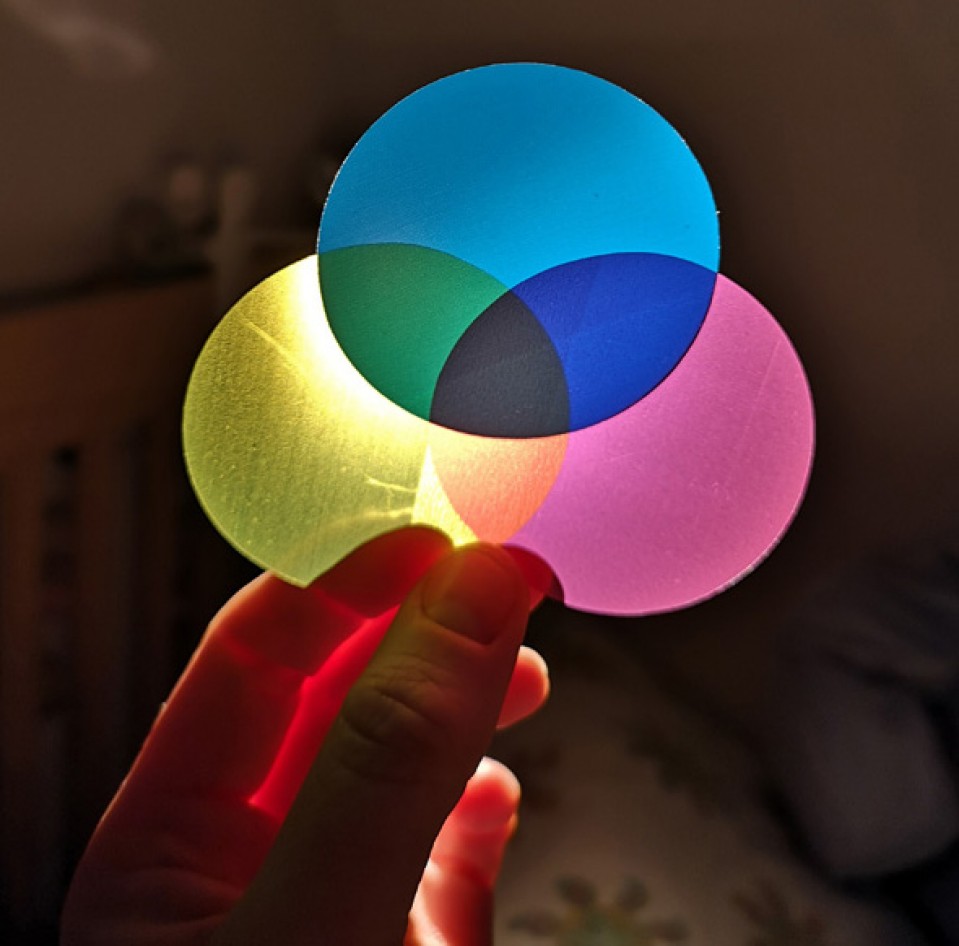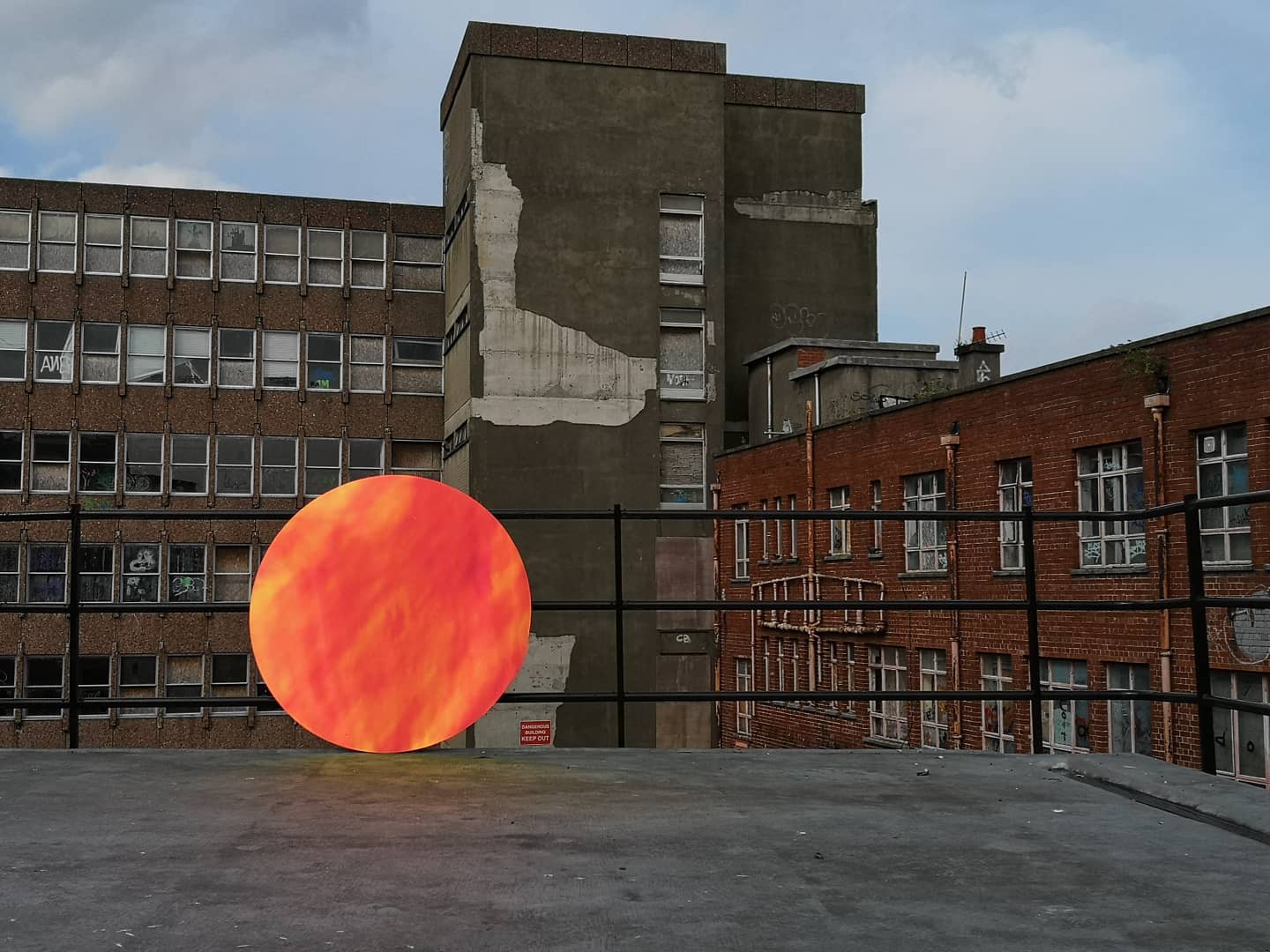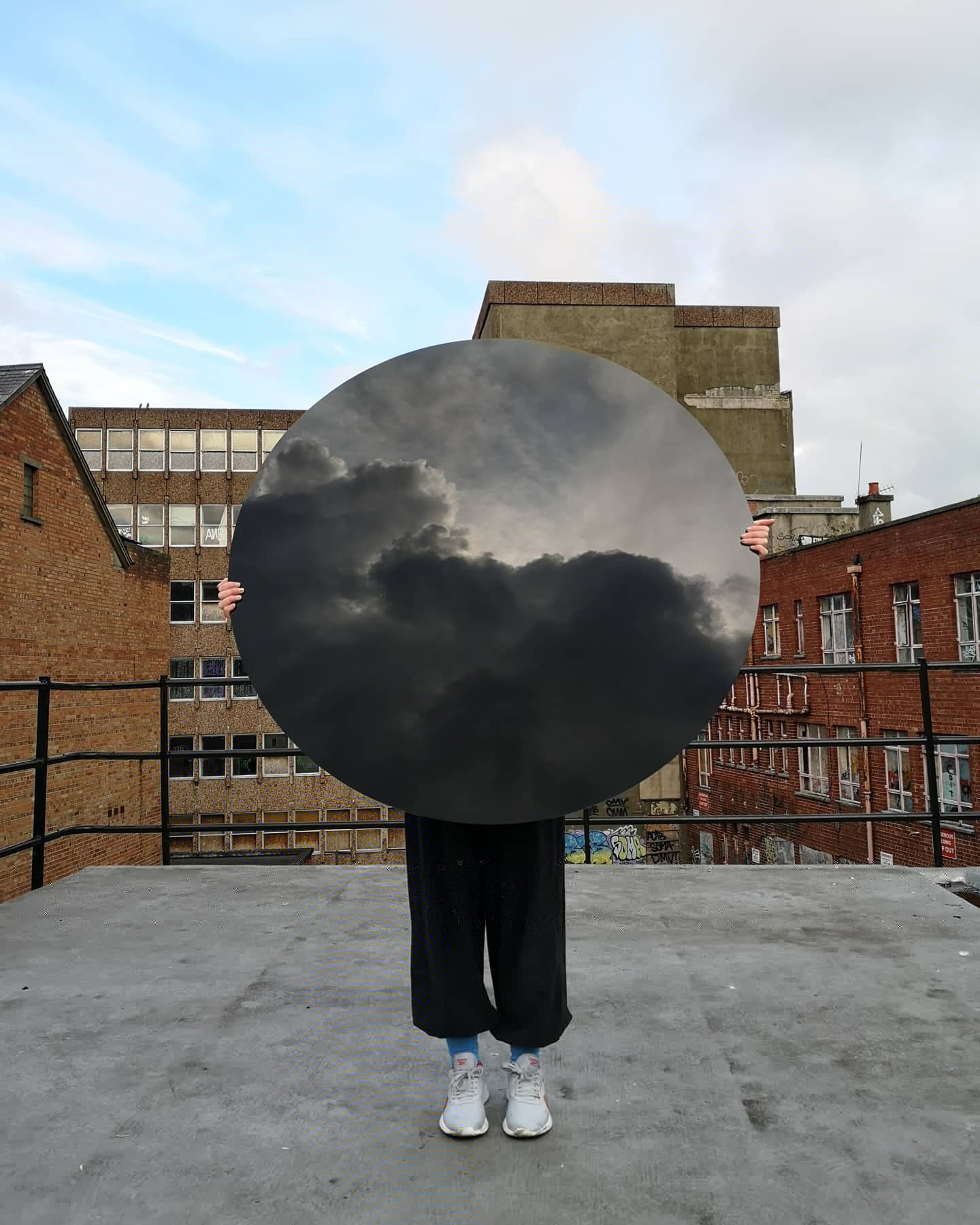
Open to the public
22-24 September
Opening times
1-4pm
You Carry Your Weather – Research residency
Jane Butler
Ends 26 September 2020
Jane Butler explores how the processes of the mind connect with the body and to our external environment.
Her architectural interventions, installations and photography-based works are informed by elusive memories and neurological effects. She utilises surfaces, text, colour and light to explore how the formal aspects of artworks subconsciously affect human experience, and how advances in neuroscience influence how architects and urban planners shape cities.
She is interested in the unseen potential of existing urban structures and predominantly works site-specifically to generate poetic responses to city life and connect public and private states.
Jane’s two-week residency at PS² included a presentation of her current research into the fields of psychology, psychiatry and the built environment, and investigations into how internal sensory and cognitive processes connect with external stimuli, spaces and experiences. She used the Project Space to re-contextualise her research to date and as a testing ground for further experimentation. She also generated a new dialogue around her work by inviting input from key figures in areas relevant to the research.

Jane Butler- research image, 2020
The Residency

Jane Butler, Research Image, 2020
"I am particularly interested in the neoliberal city as both a healing and toxic site, where our internal psychological states can manifest into the physical environment. Taking the city as a metaphor for the human brain - while acknowledging that we have become disembodied from our city - the research includes examining the role of psychiatric and therapeutic methods in order to heal or reconnect us with our city again.
What are the roles of the senses in connecting these public and private states? How does the built environment encourage or deny this connection with the senses?
Who is granted these sensations within a city? Who feels connected and who feels disconnected?”
____________________________________________________________________________________________
Tuesday 22nd September 2020
Conditions of urban life can be both sublime and dystopian. Cities can be aggressive and peaceful at the same time.
Today, I'm thinking about how our psychological and psychosomatic states can manifest in the physical environment through sensory experiences of the city.
Anyone who has experienced panic attacks or agoraphobia knows only too well how they can manifest. Have we become disembodied from our city? How can the senses help to reconnect us? How can we heal through connecting with the senses through mind-body connections?
Who is granted the healing connections with the city and who feel disconnected?
These questions must consider social class, physical health and mental ill-health.

Jane Butler, Research Image, 2020
Today I had a visit from urbanist and senior lecturer in Architecture at Queen's University Agustina Martire, who took the time to chat through some of my strands of thought. Agustina Martire is a lecturer in architecture at Queen’s University Belfast. She studied architecture in Universidad de Buenos Aires, has a PhD in urban history from TU Delft, and a postdoc in urban conservation from UCD Dublin. Agustina runs the interdisciplinary research project StreetSpace.
Our discussions began with talking about the first healing space introduced within cities: our parks, and in particular American landscape architect, Frederick Law Olmsted, who is best known for designing the grounds of New York City's Central Park. The majority of these spaces were created at a time of high urban pollution and were man-made spaces that replicated nature in order to ‘heal’ citizens of the effects pollution and noise that came with the rise of the industrial revolution.
Undoubtedly, the idea of replicated nature in a city is needed for a better and healthier way of life, but what part do these spaces play in tricking us into a false sense of comfort? Scientists understand the psychological effects of nature to the point where urban planners are now simulating nature with virtual forests within cities in order to relieve daily stress. We both agreed that the use of technology is a 'less exact science' as a means to understand a place in order to heal, but there is something within this ‘trickery’ I’d like to explore further.
'Literature is good at giving a sense of a place.' Agustina had a couple of suggestions of novels that explore place and the senses, including The Jungle by Upton Sinclair, which portrays the harsh conditions and exploited lives of immigrants in the United States in Chicago and similar industrialized cities. This brought up discussions around class and depending on your ‘place’ (or perspective) within a city, as your narrative and experiences can be varied.
Returning to the idea of ‘trickery’ and thinking about those disembodied and psychosomatic states we can sometimes find ourselves in - is this the brain deceiving us into question what's real and what's not? (thinking of this in terms of the video pieces - brains deception- between real and fiction)
____________________________________________________________________________________________
Wednesday 23rd September 2020

You Carry Your Weather (With You), 2020
This morning I had a visit from fellow Freelander, artist and choreographer Janie Doherty. In a very Janie-fashion, she kicked off the conversation through movement and talked about how you would paint a scene through dance, in particular with hand movements.
Janie Doherty is a freelance dance artist who is based in Belfast, Northern Ireland. Doherty enjoys moving in a poetic fashion in unexpected places: supermarkets, post-offices and bakeries. She is fascinated by working-class choreography and the cultural joke with the jab that is specific to a place. Doherty believes that our softness is our strength.
We talked about our own bodies in relation to space and the idea of embodied imagination.
We discussed the city being a physical, emotional landscape, how it can grant us sensations of lightness or heaviness, and how we embody that as we move through the environment.
Both fans of therapist and scientific researcher Bessel Van Der Kolk's book, The Body Keeps the Score and his alternative approach to healing involving mind, brain and body, we met as both out practices explore the senses and movement as a form of healing and reconnecting with the self.
Excited by the sight of the large reflective circular disks I had installed in the space, Janie and I spent the morning experimenting and playing with them on the roof of PS².
____________________________________________________________________________________________
Thursday 24th - Friday 25th September 2020
Throughout the remainder of the week, I presented film work I had documented on the roof. I was initially drawn to the roof in the same way I am drawn to collecting images of the changes in the sky: to be closer to the clouds; a human curiosity to try to make sense of something bigger than ourselves.
Returning to the position of working on the roof, I was recommended Micheal de Certeau's text 'Walking in the City', in which he highlights the complicated power structures that dictate how the city is read. He examines two perspectives in viewing the city, one from the top of a skyscraper, and the other from the street level. From the roof, we are 'lifted out of the city’s grasp', and situated in the viewpoint of the city planner. De Certeau argues that this perspective is less meaningful than the one experienced by the urban body. City planners are so removed from the everyday life of the city and yet the power of the city lies within the urban body and its movements at street level. I’m reminded of Tribeca and the mindless development of our already traumatised city.
Does taking the position on the roof imply a toxic sense of power? One of my visitors (Alissa Kleist) challenges this view with the story of ‘A Rooftop Rite’; The Adonia festival in ancient Greece where women mourned the death of the Greek god Adonis, commemorated the dead, and celebrate nature by taking to the rooftops and sewing quick-growing plants like lettuce and fennel in pot shards, representing the gardens of Adonis, which would flourish, and then wither. The ritual became a nighttime celebration where the women stayed up all night singing and dancing, inviting strangers to ascend the roofs to reclaim this space in the city.
The theory of gendered space comes up again during my discussion with anthropologist and researcher Rebekah McCabe. We talk about cities' masculine qualities and how they are phallocentric in their formation. For centuries women were institutionally excluded from architecture, engineering and policy, so what would a women-led city look like? What would it feel like? What would be important? Would it be more sympathetic? Sympathetic to whom?
I’m reminded of my chat with Agustina when we spoke of experiences of the city through class, physical health and mental ill-health. Who has the privilege of healing connections with the city and who is left out?
I refer to one of The Infinite City Podcasts which Rebekah produced through PLACE in 2018. Designing Deaf Space looks at the practice of primitive design and putting the human back into design. Nowhere do we see this better than in designing of deaf space wherein it is important to think differently about buildings and consider them not so much as objects but as extensions of the body and human relationships.
Urban planning was initially introduced in the 19th century and has its roots in public health and the moral value of citizens. This investment in ‘moral goods’ we still see today within urban planning but it lives with a colder collection of data that flattens out the richness of multilayer sensory experiences that the city can provide.
____________________________________________________________________________________________
Jane Butler is an artist and organiser specialising in public and site-specific projects. Butler received a BA in Fine Art (Sculpture) from Ulster University (2009). She has produced projects in partnership with Belfast City Council, PLACE and TULCA Visual Arts Festival. Her practice includes designing, coordinating and developing various visual arts aspects for public programmes including Belfast City Council’s City As A Gallery, The MAC and Belfast Children’s Festival. She is currently co-director of Household, a associate member of Array Collective and currently based in Flax Art Studios, Belfast. She is currently on the PS² Freelands Artist Programme 2019-2021.

